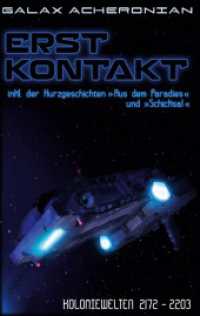Full Description
The 21st-century technological revolution has facilitated worldwide communication and expanded personal and cultural relationships between individuals and groups on an unprecedented scale. People from different countries and backgrounds are now in constant communication. As a result of this increased contact, in the field of English language education, the importance of developing learners' intercultural competence has been strongly emphasized on both sides of the Atlantic, by national and intergovernmental organizations such as the Council of Europe, and ACTFL in the USA. The main aim of this book is to provide language teachers with comprehensive guidance on developing their students' intercultural competence in the classroom.
Contents
Yeşim Bektaş-Çetinkaya
Introduction: English(es) and Culture in Language Teaching
Elif Kemaloglu-Er and Esma Biricik Deniz
1 Defining ELF as a Sociolinguistic Concept and a Pedagogical Perspective
Servet Çelik and Şakire Erbay Çetinkaya
2 Culture in English Language Teacher Education Programs: Striving
for Intercultural Communicative Competence
Eda Nur Özcan and Esim Gürsoy
3 The Representation of Culture into ELT Materials
Mehmet Galip Zorba and Arda Arikan
4 Developing Intercultural Communicative Competence through
Literature
Berna Güryay
5 Developing Intercultural Competence through Creative Drama
Gonca Yangın Ekşi and Asuman Aşık
6 Raising Intercultural Awareness through Technology
Claudia Nickolson and Arda Arikan
7 Developing Intercultural Competence through Movies
Ceylan Yangın Ersanlı and Deren Başak Akman Yeşilel
8 Raising Intercultural Awareness of Young Learners
Bengü Börkan
9 Classroom Assessment of L2 Cultural Knowledge
Tarkan Kaçmaz
10 Conflict Resolution in Intercultural Communications
Contributors







